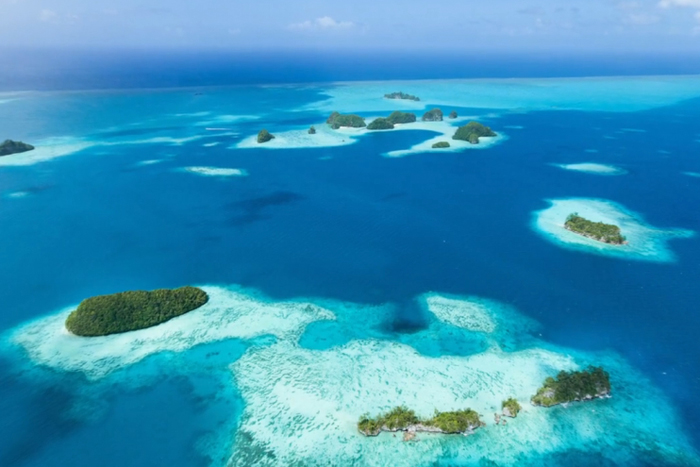
Climate Fixes Need Realistic Compromises (Op-Ed)

Raghu Murtugudde is executive director of the Chesapeake Bay Forecasting System at the University of Maryland Earth System Science Interdisciplinary Center (ESSIC) and a professor in the Department of Atmospheric and Oceanic Science. Murtugudde contributed this article to Live Science's Expert Voices: Op-Ed & Insights.
Once the impacts of man-made pollution on global climate became obvious in the late 1980s, the U.N. established a Framework Convention on Climate Change (UNFCCC) and the first meeting was held in Rio de Janeiro, Brazil, in 1992 to agree upon a process to negotiate global climate treaties such as the Kyoto Protocol. The participating member countries and nation states meet every year in the Conference of Parties (COP) and use the state-of-the-art climate knowledge compiled by the Intergovernmental Panel on Climate Change (IPCC).
Thus it is the role of natural and social scientists to deliver the scientific, technological and socio-economic layout of climate science and human impacts, while it is the role of the COP to develop the pathways to plan for the future to adapt to and mitigate climate change impacts. In a recent perspective piece in Science, economists Ottmar Edenhofer and Jan Minx framed climate scientists as the "mapmakers" for the United Nations efforts to address global warming, and government representatives the "navigators."
Even as the mapmakers and navigators prepare for next year's COP conference in Paris, the good, the bad and the ugly of their sausage making are being aired on various outlets. Some have described the talks as inconsequential horse-trading, suggesting that instead, climate change be an opportunity for science and technology development to meet the human needs for food , water and energy without harming the environment — in other words, participants should not focus on binding legal agreements as the holy-grail.
Climate models aren't perfect, but they are critically valuable
What climate models capture is remarkable in terms of the natural variability at all timescales, and the trends resulting from human activities that release greenhouse gases, and other activities such as deforestation. But there are certain irreducible uncertainties, as well as regions where natural variability will be larger than any trends for many more decades.
The mapmakers have nonetheless endured endless questioning by climate deniers about the scientific accuracy or the objectivity of their compass. Several recent climate episodes have exposed the soft underbelly of climate-model uncertainties that cannot be waived away. The general argument has been that climate models are better at revealing long-term than short-term variabilities, but the recent warming pause is still not fully explained.
Get the world’s most fascinating discoveries delivered straight to your inbox.
The most robust short term variability — that is, El Niño — has become a poster child for climate predictability, but the 2012 forecast was a failure and the 2014 El Niño is also is playing truant. Two separate studies currently are in press arguing that the decrease in the Indian monsoon rainfall for the past five decades has not been decreasing as suggested by climate models, such as those that inform the IPCC reports. Those results appear to be due to some dynamic inconsistency between ocean and land warming, which renders future projections of monsoons unreliable,if not inaccurate. But, bullish claims continue.
While a warming pause also occurred during the 1960s, the current pause (which appears to have been initiated around the beginning of the new millennium) was not projected, nor do researchers have any firm predictions of when it may end. But the pause is not benign, since it does come with some deleterious climate patterns such as the multi-year drought over California.
Innovative modeling studies have shown that oceans could, in fact, be taking up more heat, possibly related to accelerating trade winds. However, the argument that the deep ocean is hiding away the heat is not supported by the data according to one study just published in Nature by William Llovel of the Jet Propulsion Laboratory and his colleagues. Despite the fact that such answers are derived from models that only include observed sea-surface temperatures or surface-wind data, some questionable claims have been made by other researchers about this being the last warming pause.
That climate scientists get as hot under the collar as climate deniers has become especially clear in the most recent debate over whether limiting global warming to 2 degrees Celsius over the preindustrial global mean temperatures is a realistic goal for the COP.
Several human factors may provide a context for abandoning unrealistic and unscientific goals despite their seductiveness in capturing the fickle attention of society.
A 2-degree warming has no meaning to most people in terms of the consequences they may face if this artificial threshold is crossed. On the other hand, it may simply add to the climate fatigue or the sense of helplessness when news stories repeat the claim that we will tear through this limit no matter what we do.
Turning data into action
While research indicates that the human mind does discount the future, climate negotiation games have shown that when there are regulations to punish the free-riders, people do respond to incentives to harvest the environment sustainably and avoid the tragedy of the commons to provide a better future for all.
Another interesting feature of the cooperative shared decisions for the future is that they have a higher rate of success when subgroups evolve with common interests and they come to the negotiating table with their common goals as negotiating positions.
This is good news for the COP, since many such subgroups have already formed. These include a self-organized group called Least Developed Countries and another group calling itself BASIC (for Brazil, South Africa, India and China), and the agreements on some climate issues between the United States and China. Over 65 countries have adopted their own climate legislation, giving fillip to the chance of success for the COP. While the United States has not adopted such legislation, the U.S. Environmental Protection Agency (EPA) has been given the mandate to regulate greenhouse gases, and a series of executive orders by President Obama on fuel efficiency, carbon capture at coal-burning power plants, and so on have strengthened America's moral standing on climate change .
The navigators should thus have an easier time building on the bottom-up action by a number of countries that have developed their own landmark climate legislation, and set an appropriate goal rather than aiming for a simplistic catchall — no matter how strong the temptation. In a recent opinion piece, David Victor and Charles Kennel, both of the University of California, San Diego, state in the journal Nature why it is necessary to ditch the two-degree goal, why any new metric must be easily measurable, and that as the needle moves, it should show that the actions are yielding the intended results, regardless of whether the commitments are top-down or bottom-up.
The ugliness of the process often gets more press than the good or the bad, but there is no indication that COP is unable to police itself in the long run to deal with the risk of climate change. The mapmakers need to be mindful of the accuracy of their scientific compass and avoid the cliffs of uncertainty, while the navigators need to stay focused on their moral compass to navigate the future safely for all life on the planet.
Follow all of the Expert Voices issues and debates — and become part of the discussion — on Facebook, Twitter and Google+. The views expressed are those of the author and do not necessarily reflect the views of the publisher. This version of the article was originally published on Live Science.

